Problem with puddles in your land or issues due to the overwatering in your patio? A simple solution for drainage problems is to learn how to install a french drain and do the project.
French drains are a standard and excellent option to keep running water away from your yard and basement, avoid flooding during the rainy season and protect your house from damages to the foundation.
Keep reading this article to learn all the steps to do this DIY project.
What is a French Drain?
First, you need to clarify what a french drain is. It’s a gravel-lined trench with recessed piping that carries water away from the house.
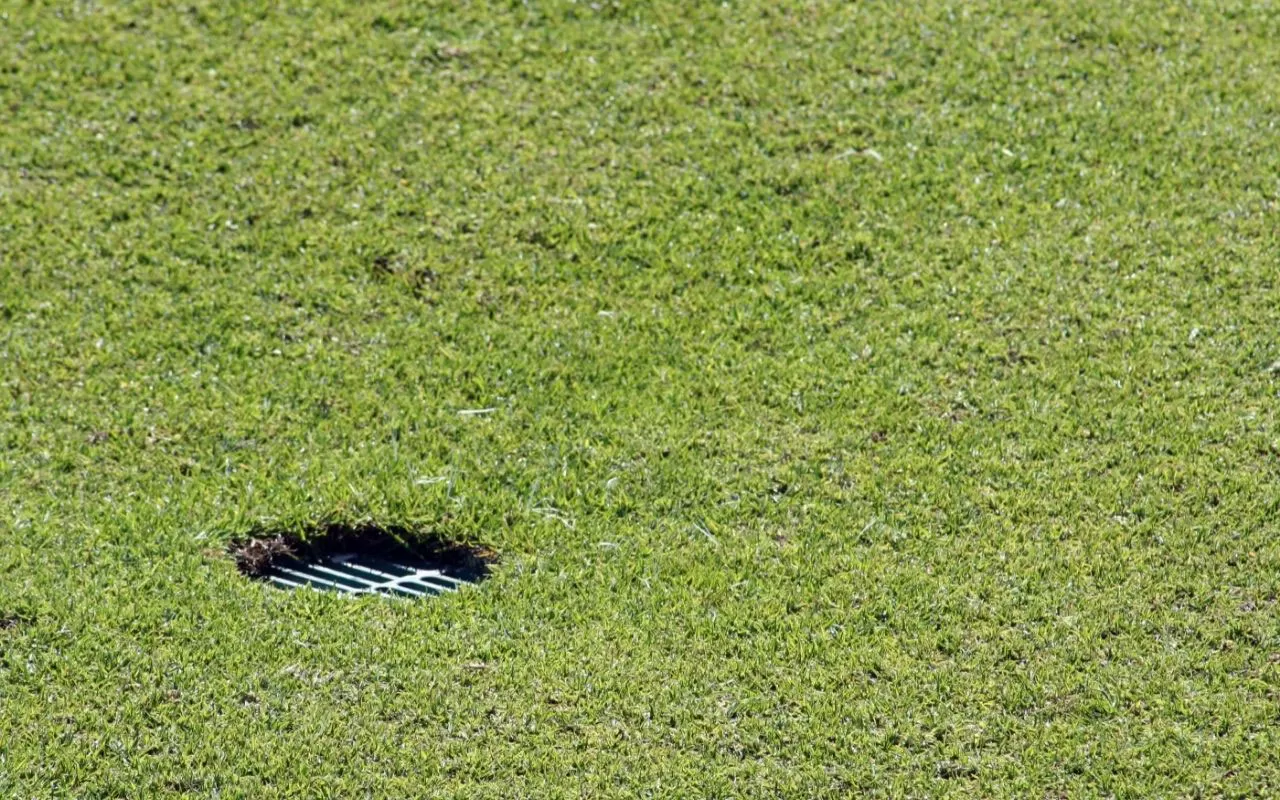
A French drain system is an excellent way to ensure your water flowing away from your yard to a lower part or even your street. The water could come from gutters, pools, and more. This system prevents problems caused by water in your yard and house foundation.
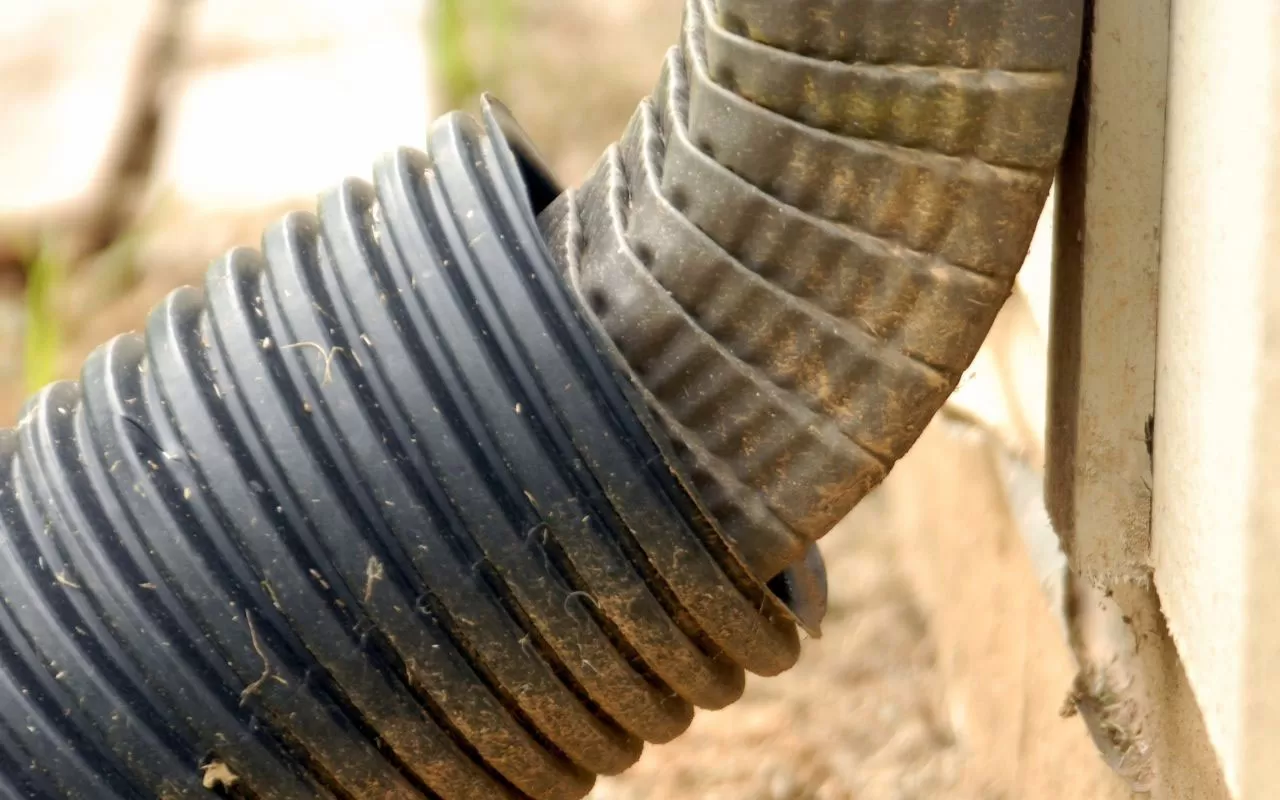
Benefits of Installing a French Drain
Some of the most relevant benefits of installing a french drain are:
- Avoid spot and over moisture on your patio
- Easy Maintenance
- Help the health of your lawn
- Prevent flooding on sidewalks
If you want to learn more about the advantages of installing a french drain, you can visit our blog, where you’ll find nine reasons for installing a French drain.
How to Install a French Drain: 9 Uncomplicated Steps
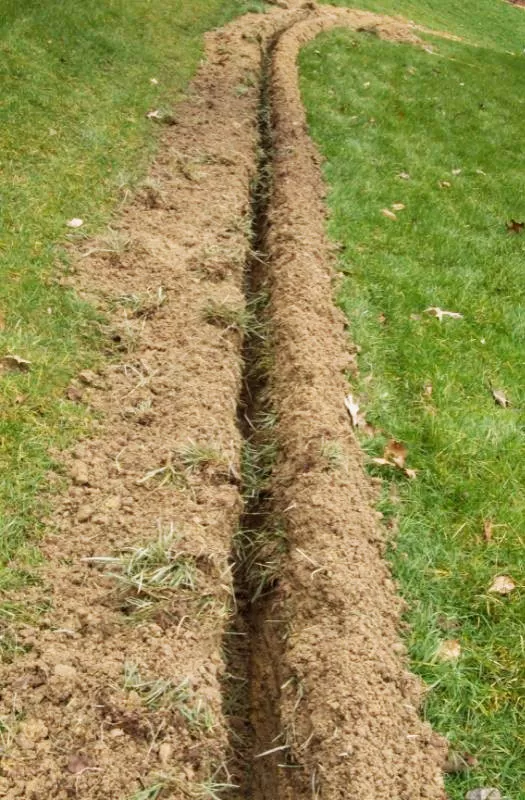
How to install a french drain can be as easy as doing these nine steps:
- Mark the location
- Create a trench
- Put fabric lining
- Place landscaping stones over the lining
- Connect the pipe system
- Introduce drain pipe
- Cover the channel
- Arrange the surplus part of the lining
- Cover the trench
To install a French drain, you must adequately slope the soil in your garden. In general, you will want to allow a slope of about one inch for every eight feet of the length of the drainage pipe.
Before starting the project, you must contact your local board of officials or government office. Even a small earth-moving project can require extensive approvals from the various governmental bodies in your area.
It is also a good idea to check with your neighbors to see if you can dig on their property before you begin.
Step 1: Mark the Location Where the Pipe Will Be Placed
Before starting the installation, you first need to plan your french drain design and location properly. It needs to be a spot in an area with a previous drainage issue or in a potential flooding area. It’s also a good idea to place it at a proper distance from your house.
When you have selected the area, it is essential to mark where you will place the french drain; spray paint will help you do this.
Step 2: Create a Trench for The French Drain
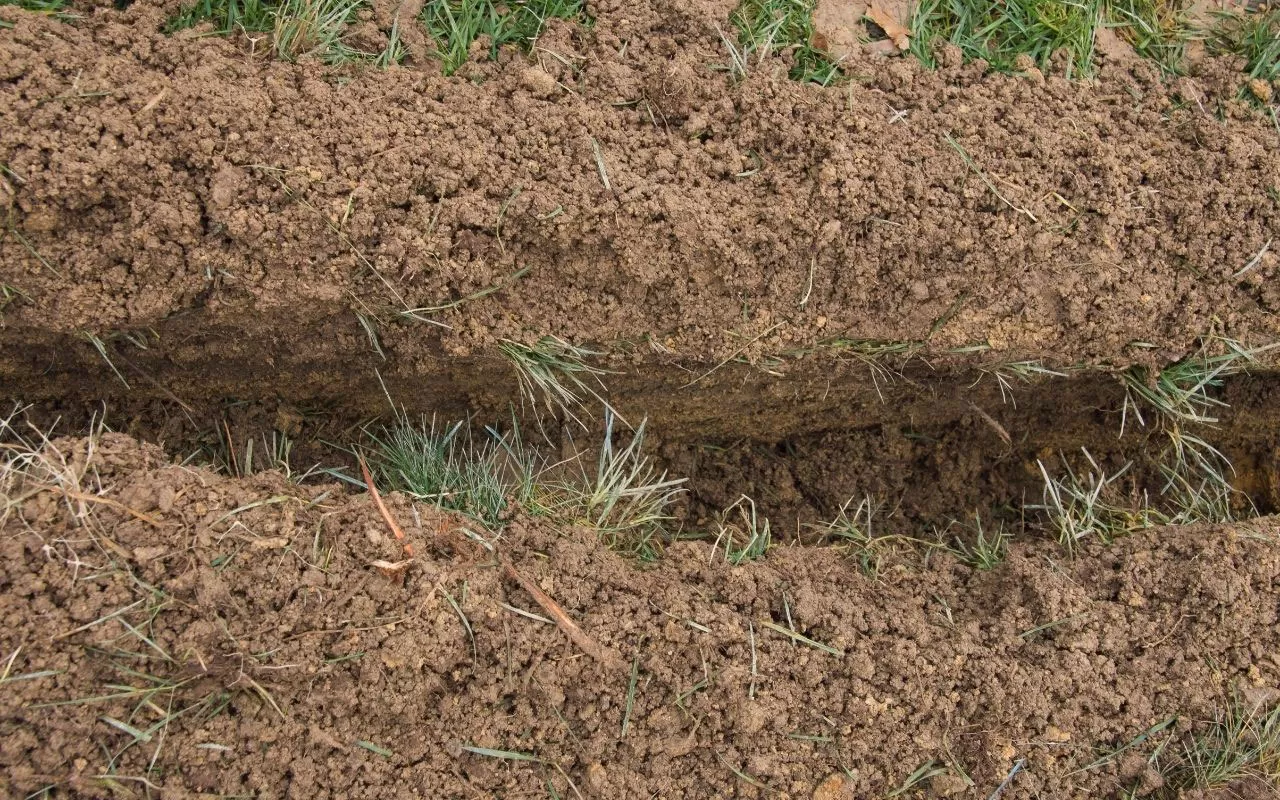
Once you’ve chosen a location for the French drain, it is time to dig the trench. Ideally, the drainage pipe should run downhill, but you can build a slope yourself if you don’t have a sloped yard. You can use a hand shovel.
There’s not an exact depth of the trench; however, professionals suggest it should be at least 1.5 feet deep for appropriate functioning.
Step 3: Put Fabric Lining Into The Trench
It is necessary to put a piece of fabric to cover the bottom and the trench walls. This fabric lining will play an essential role in soil retention and prevent the pipe from clogging. After laying down the fabric, you can continue with the french drain installation.
Step 4: Place Landscaping Stone In The Canal Over The Lining
After laying down the fabric, you should place a layer of gravel on top of the material. The stone acts as solid bedding for the drainage pipe. This layer will prevent weeds and debris from getting into the tube. You may want to compact the gravel first to prevent it from shifting.
After setting the gravel, you can add more fabric to the bottom of the trench. When laying down bedding, you should be sure that it will support the piping and drain. Make sure that you use good-quality landscape fabric or sand. Otherwise, your drainage system will not be efficient.
Step 5: Connect The Pipe System
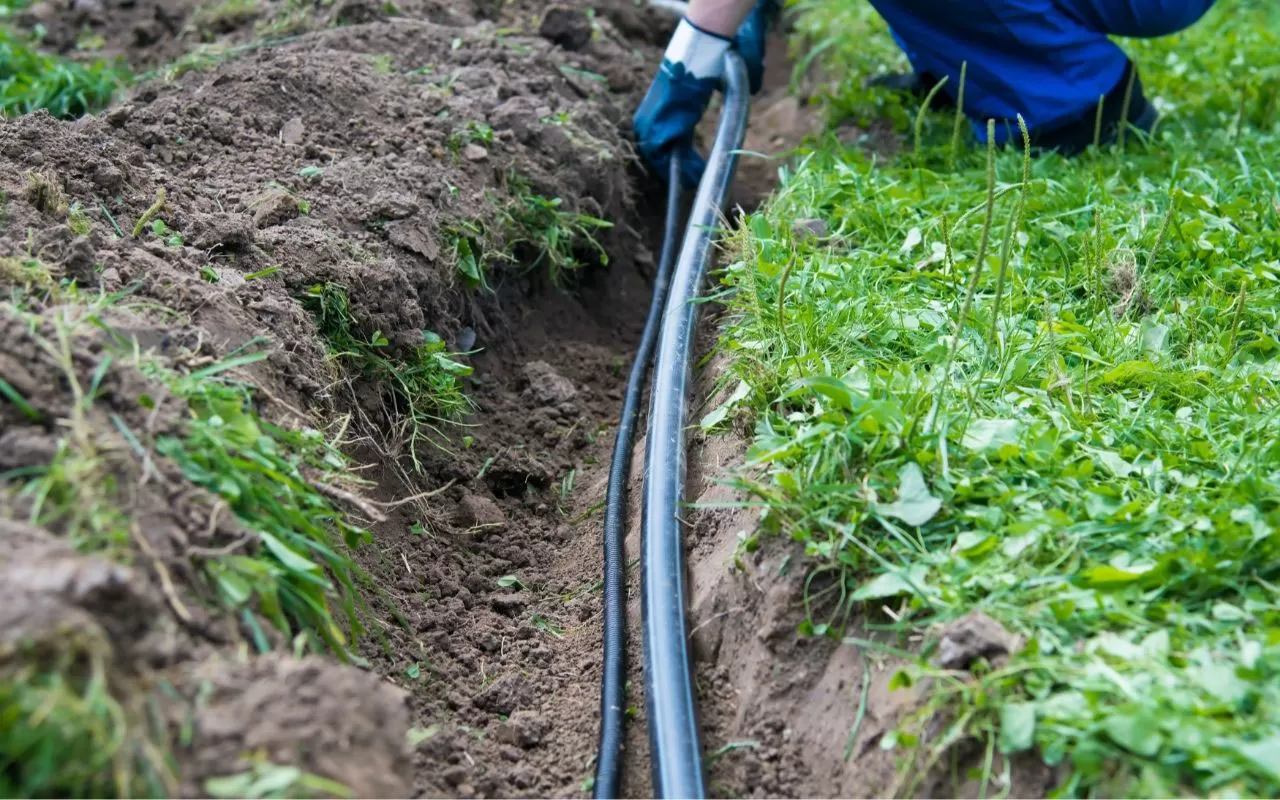
To do a proper installation, you need to ensure all the necessary parts of the pipe connections, including adapters. You would have to measure a cut in some features for a good fit. If everything is connected correctly, check to ensure it is not loose.
Step 6: Introduce Drain Pipe To The Trench
The next step is placing a pipe into the trench over the gravel bed. Some professionals instead use perforated pipes with the holes facing down. When you choose a perforated pipe, you should surround it with gravel.
No rule states perforated pipes must be used with french drains, in fact, you could use a solid pipe.
Step 7:Cover The Trench With More Stones
Once you have laid the pipe and installed all the french drains, you will need to cover the line with rocks like the ones you used as a base in the trench.
Step 8: Arrange The Surplus Part Of The Fabric Lining
Then, with the remaining part of the fabric lining, you will wrap it around the pipe so that no part of the pipe is left uncovered.
This step is not necessary if you have chosen perforated pipes, as you would have to cover the pipe with gravel.
Step 9: Fill out and cover the trench
Now all that remains is to backfill the surface of the trench you made. You can do this with the same soil you removed; you can also use decorative stones to prevent loose soil after filling the track.
Contact a Professional Team
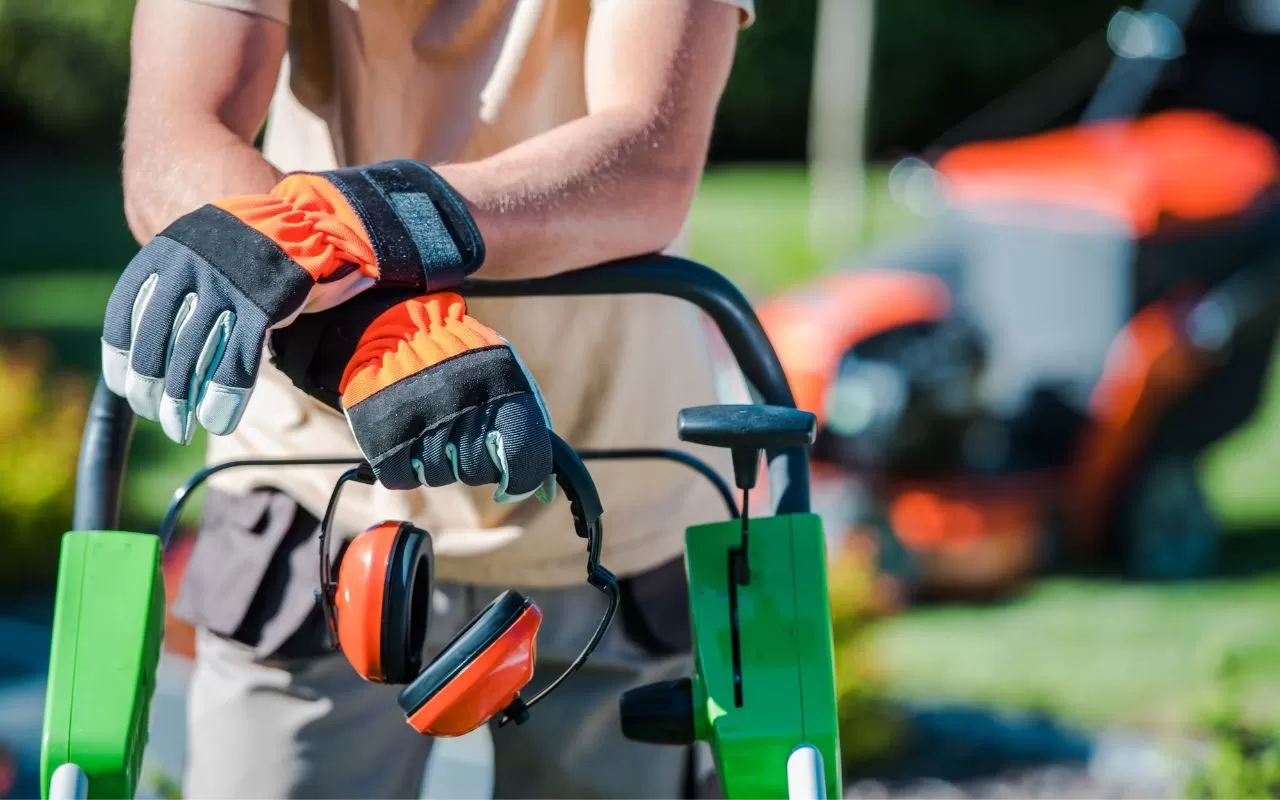
Now that you have these easy steps on how to install a french drain, you can follow them to implement it as a DIY project. However, some actions require a significant understanding of how french drains work, so you can also hire a company to help you with the process.
Mi Jalisco Landscaping offers you various services to help with landscaping and lawn care in the Virginia area. Call us today and get a free estimate!



